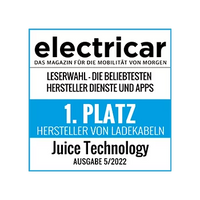How reliable is the manufacturer’s information and can it really be transferred to everyday use?
In order to determine the power consumption of electric cars, the standardized test procedure for light motor vehicles WLTP ( Worldwide harmonized Light vehicles Test Procedure ) has been used worldwide since 2017. Measurements are taken in the test bench under laboratory conditions, simulating a realistic car journey.
WLTP replaces the previous NEDC ( New European Driving Cycle) procedure, which was introduced by the EU in 1992. The latter was considered to be not very practical and produced consumption values in the simulation that deviated significantly from the everyday use of the electric car.
The test parameters at a glance:
| NEDC | WLTP | |
| temperature in the test chamber | 20–30°C | 23°C |
| route length | is 11 km | 23 km |
| cycle duration | 20 minutes | 30 minutes |
| cycle characteristics | two phases: 13 minutes of simulated city driving, 7 minutes of simulated cross-country driving | four phases: low (up to 60 km/h), medium (up to 80 km/h), high (up to 100 km/h) and extra high (over 130 km/h) |
| average speed | approx. 33 km/h | 47 km/h |
| downtime share | 25% | 13% |
| top speed | 120 km/h | over 130 km/h |
WLTP also takes into account parameters such as:
- Special equipment: This affects the total weight.
- Total weight: The heavier the car, the more energy it needs for acceleration.
- Aerodynamics: The more aerodynamic the vehicle, the lower the consumption.
- Rolling resistance: The narrower and larger the tire, the lower the rolling resistance, the higher the range
- Tire pressure: If it is too low, more energy is required.
This makes it easy to compare different vehicle models with each other.
Ranges for the most popular electric cars in Europe in 2021 according to WLTP
| car model | range [km] according to WLTP |
| Tesla Model 3 | 510 to 626 |
| VW ID.3 | 330 to 550 |
| Renault Zoe | 175 to 300 |
| VW ID.4 | 479 to 525 |
| Kia Niro | 312 to 485 |
| Fiat 500e | 298 to 320 |
| Hyundai Kona | 305 to 484 |
| Skoda Enyaq | 340 to 510 |
| Peugeot e-208 | 280 to 340 |
| VW e-Up! | 134 |
The different driving styles of drivers - some often accelerate strongly, others prefer to drive at a steady pace - cannot be adequately represented in a standardized test procedure. In addition to the individual driving style, other factors also play a role in everyday life, such as the use of air conditioning and seat heating, recuperation performance and the outside temperature. An overview:
- Driving style: Frequent acceleration, sudden starts and heavy braking reduce the range.
- Air conditioning: Cooling and heating reduce the range.
- Speed: Sustained fast driving reduces the range, as do constant changes in speed.
- Weather: Activating the air conditioning – cooling and heating – reduces the range, as does using the seat heating.
- Battery degradation: The capacity of the battery and thus the maximum range decreases continuously over time and with each charging and discharging process. However, the lifespan of the battery can be positively influenced by proper care.
Therefore, the WLTP values can deviate from everyday use. However, WLTP still provides better approximate values than the old NEDC method.













